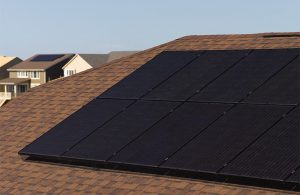More non-Chinese solar polysilicon is being sent to Vietnam to comply with AD/CVD, UFLPA
New reporting from Bernreuter Research found that polysilicon imports into China have fallen to the lowest level since 2011. Outside imports of polysilicon fell by 28.5% to 62,965 MT in 2023 — now less than the 64,614 MT reached in 2011.
“The non-Chinese polysilicon manufacturers Wacker, Hemlock Semiconductor and OCI Malaysia are increasingly shifting their shipments from China to Vietnam, where three of the four largest Chinese solar module suppliers have established wafer plants,” explained Johannes Bernreuter, head of the polysilicon market specialist Bernreuter Research and author of the Polysilicon Market Outlook 2027.
In 2018/2019 JA Solar started wafer production in Vietnam with an annual capacity of 1.5 GW, which it expanded to 4 GW in the first half of 2023. JinkoSolar followed with a 7-GW wafer plant in early 2022, and Trina Solar opened a 6.5-GW wafer factory in August 2023.
The shift of non-Chinese polysilicon being exported elsewhere is mostly due to the AD/CVD case in the United States against Chinese manufacturers working in Southeast Asia. If Southeast Asian solar exports do not use Chinese wafers, they don’t have to pay the tariffs beginning in June. To comply, most manufacturers making product for the U.S. market have shifted upstream manufacturing out of China.
In addition, the Uyghur Forced Labor Prevention Act (UFLPA) that bands products made with forced labor in Xinjiang in northwestern China from entering the United States, is contributing to separate supply chains based on polysilicon from non-Chinese manufacturers. Having wafer production outside China makes it easier for the manufacturers to document to U.S. Customs and Border Protection (CBP) that no silicon metal or polysilicon from Xinjiang has entered their supply chains.
However, customs statistics show that polysilicon exports from China to Vietnam soared from 639 MT in 2022 to 4,970 MT in 2023. “That raises doubts about the claims of a separate supply chain and should sound alarm bells at the CBP,” Bernreuter said.
Hemlock Semiconductor (USA), Wacker (Germany/USA) and OCI Malaysia together were able to increase their polysilicon exports to Vietnam from 18,672 MT in 2022 (+78.2%) to 33,265 MT in 2023. This growth more than compensated for the 13,918 MT they lost in business volume in China in 2023. While Hemlock and OCI achieved a net increase from their exports to both countries, Wacker’s two German polysilicon plants exhibit a negative balance: Although they were able to boost the exports to Vietnam by 7,617 MT (+151%) to 12,662 MT, their imports into China plummeted from 48,070 MT in 2022 by 12,627 MT (-26.3%) to 35,443 MT in 2023.
Wacker and OCI account for 98% of Chinese polysilicon imports now
![]() During the polysilicon shortage, China imported extraordinarily large volumes from Japan (2021: 15,431 MT; 2022: 6,129 MT) and Taiwan (2021: 6,899 MT; 2022: 3,480 MT). At high market prices, the Japanese solar module producer Sharp converted into cash considerable inventories, which resulted from a long-term purchase contract with Hemlock Semiconductor running through 2020. Likewise, the former Taiwanese wafer producer Danen sold polysilicon stocks from a long-term contract with OCI, which expired in 2023. These two sources have obviously been exhausted now: Japan’s monthly import rate melted down to a range of 50 MT to 20 MT in the fourth quarter of 2023; shipments from Taiwan have already gone down to zero since last August.
During the polysilicon shortage, China imported extraordinarily large volumes from Japan (2021: 15,431 MT; 2022: 6,129 MT) and Taiwan (2021: 6,899 MT; 2022: 3,480 MT). At high market prices, the Japanese solar module producer Sharp converted into cash considerable inventories, which resulted from a long-term purchase contract with Hemlock Semiconductor running through 2020. Likewise, the former Taiwanese wafer producer Danen sold polysilicon stocks from a long-term contract with OCI, which expired in 2023. These two sources have obviously been exhausted now: Japan’s monthly import rate melted down to a range of 50 MT to 20 MT in the fourth quarter of 2023; shipments from Taiwan have already gone down to zero since last August.
Imports from the United States and South Korea developed in a very similar way to those from Japan in 2023. As a result, the combined share of Germany’s Wacker and OCI Malaysia in total Chinese polysilicon imports rose to 97.8% in the fourth quarter. Moreover, there has been a striking drop in overall volumes since October: While total imports lay between roughly 15,000 MT and 20,000 MT per quarter in the first three quarters, the amount fell abruptly to less than 10,000 MT in the fourth.
“If the fourth quarter is any indicator for 2024, then polysilicon imports into China will plunge by another 40% to no more than 38,000 MT this year,” Bernreuter said.
News item from Bernreuter Research





